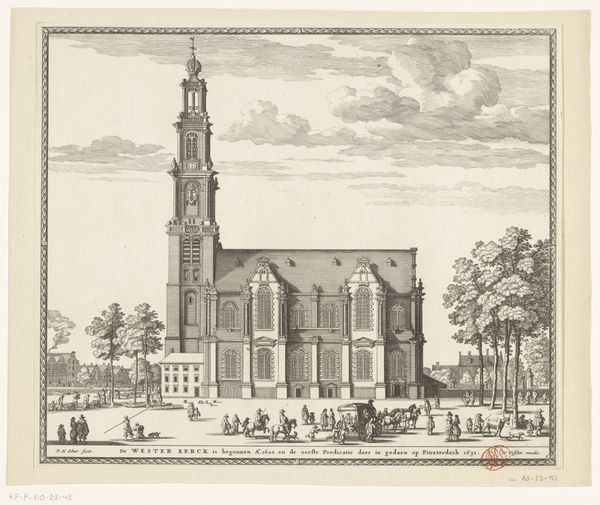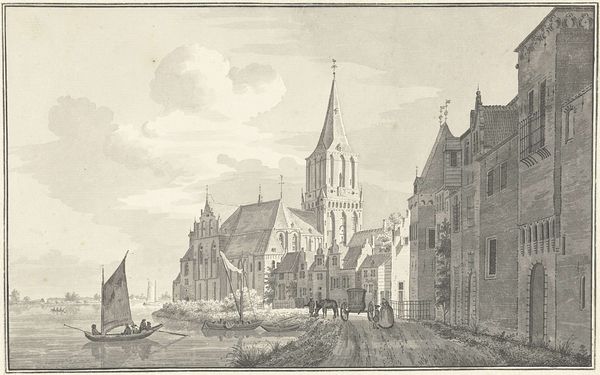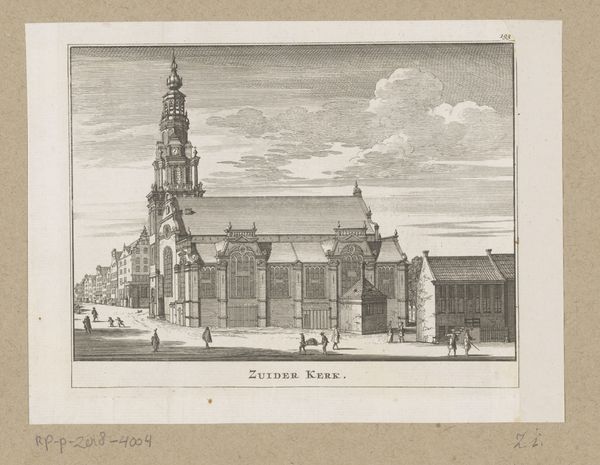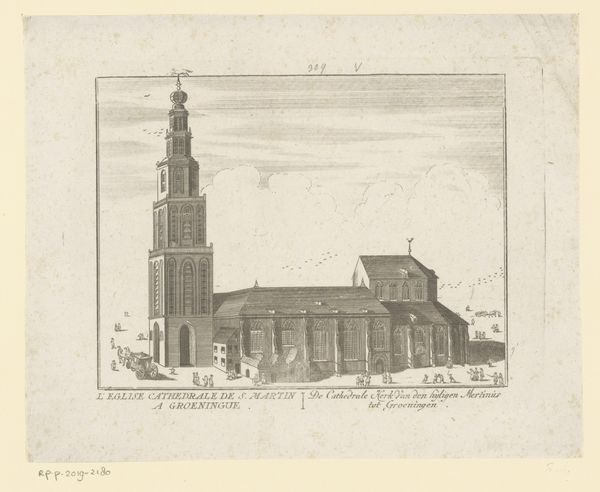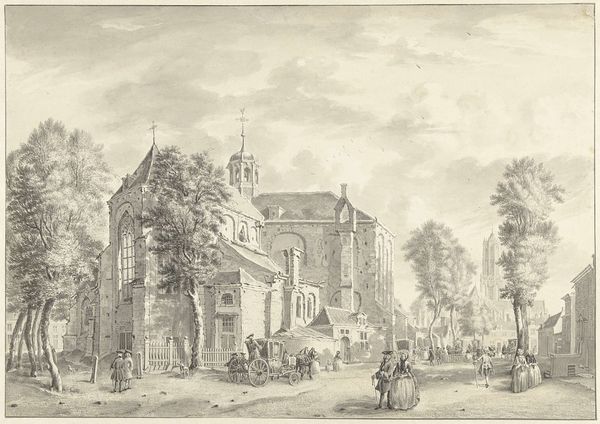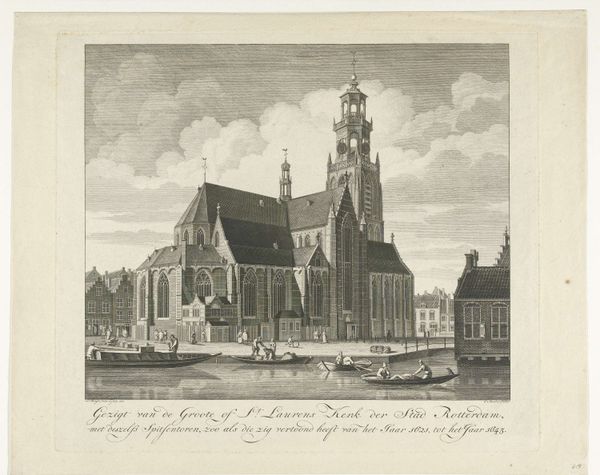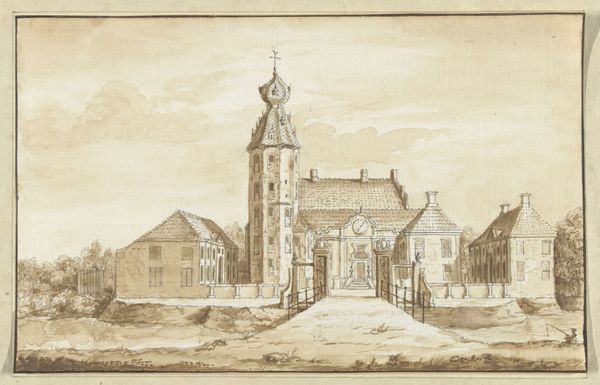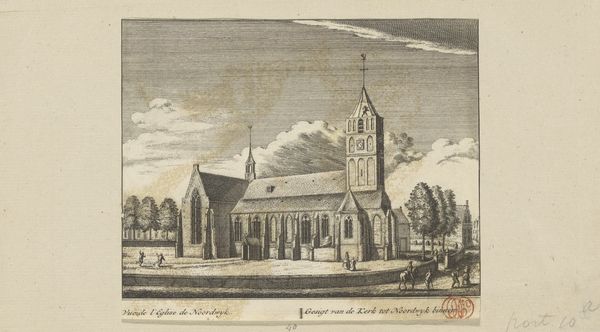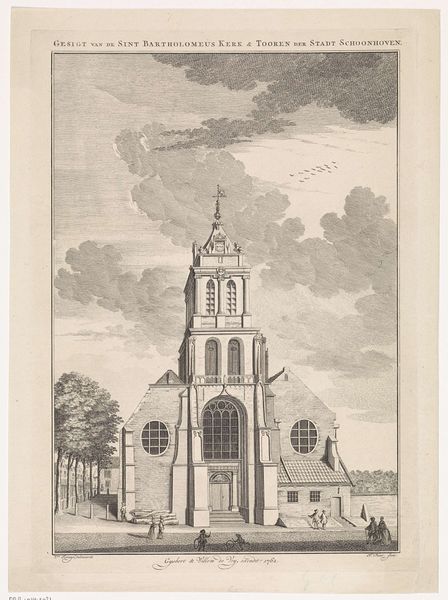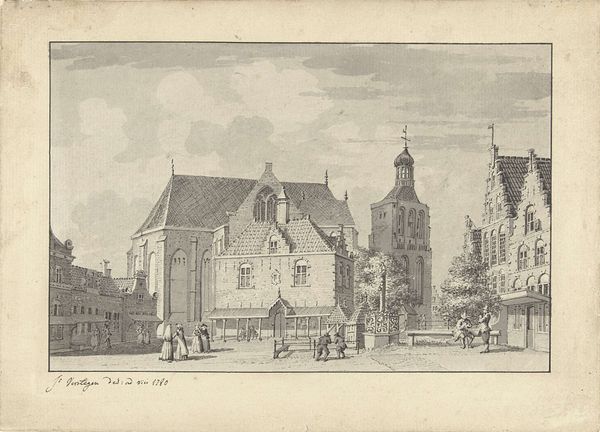
drawing, print, paper, ink, architecture
#
architectural sketch
#
drawing
#
neoclacissism
#
quirky sketch
#
mechanical pen drawing
# print
#
old engraving style
#
paper
#
personal sketchbook
#
ink
#
idea generation sketch
#
sketchwork
#
pen-ink sketch
#
sketchbook drawing
#
cityscape
#
storyboard and sketchbook work
#
architecture
Dimensions: height 259 mm, width 368 mm
Copyright: Rijks Museum: Open Domain
Curator: Look at this delicate cityscape! The Rijksmuseum holds this drawing, "De Martinikerk te Groningen," rendered in ink on paper by Jan Bulthuis in 1773. Editor: My first thought? A cool detachment, almost… like a photograph but pre-photography. It’s precise, clearly delineating the stone and mortar, and the massive scale of the church looms, dwarfing the human figures. Curator: The Martinikerk itself is fascinating. As the main church of Groningen, its soaring tower has long been a symbol of the city’s power, practically since the medieval ages! Bulthuis captured its monumental presence at the dawn of Neoclassicism so we could ponder how this spiritual image has been a continuous symbol. Editor: And it’s important to consider that this isn’t a photograph; it's a drawing intended for print. That dictates so much about the line work, the composition... He’s translating three-dimensional space into reproducible form. The crosshatching, the careful rendering of texture - it all speaks to process. What kind of paper, what inks did he chose to work with? How accessible were those materials at the time? These buildings and even city views have long been symbols but Bulthuis made material choices. Curator: You’re right about those deliberate artistic choices. The lightness of the ink wash, combined with the detailed rendering of the architecture, it almost gives the image an ethereal quality despite the sheer bulk of the building. Look how light bounces off its many faces! I wonder what he wished to project of its civic image… It feels as if Bulthuis captured not just a building, but an enduring civic ideal. Editor: Civic ideals are built with labor, stone by stone. A structure that large needed so much quarrying and transit! This view might not tell the whole story but maybe these buildings show us the impact labor had on 18th century cityscapes. To think about the skilled tradespeople—masons, glaziers, roofers—whose hands shaped every aspect… It roots the symbol in tangible human effort. Curator: Very true! What strikes me is the way Bulthuis used line work. They’re economic, almost casual in the sketching of the figures in the square, and that’s so that it lets us zoom to the symbolic power the Martinikerk and it's history. Editor: Right! The materials are speaking to us… this intersection of art and craft leaves lasting impacts for generations to witness and discuss for years to come.
Comments
No comments
Be the first to comment and join the conversation on the ultimate creative platform.


